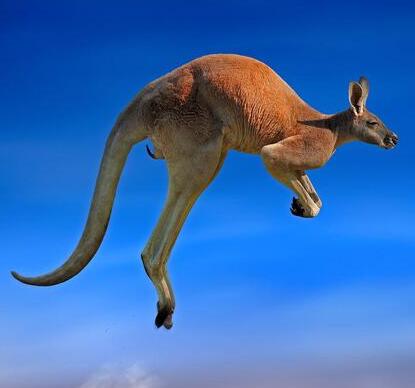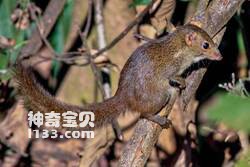Tupaia belangeri
IUCN
LCBasic Information
Scientific classification
- name:Tupaia belangeri
- Scientific Name:Tree shrew,Sino-Burmese tree shrew,northern tree shrew
- Outline:Eulipotyphla
- Family:Scandentia Tupaiidae
Vital signs
- length:26-41cm
- Weight:50-270g
- lifetime:
Feature
Good at climbing, jumping, agile in action, timid and frightened, and have a strong sense of territory. Can produce 8 different sounds for alarm, attention, contact and defense.
Distribution and Habitat
Mainly distributed in the Malay Peninsula in Southeast Asia. Domestically distributed in Sichuan, Yunnan, southern Tibet, Guangxi, Guizhou and Hainan Island. Abroad, it is distributed in southern Nepal, northern India, Bhutan, Bangladesh, Vietnam, Thailand, Laos, Cambodia, etc., reaching the Isthmus of Kra in the south.
Typical arboreal species. It has strong adaptability and is distributed from low-altitude areas close to sea level to plateaus with an altitude of about 3000m. It inhabits a variety of habitats such as deciduous forest, evergreen broad-leaved forest, tropical rain forest and limestone, and can also use secondary environments such as palm gardens.
Appearance
A small mammal that looks like a squirrel. The snout is blunt and rounded, longer than that of rodents and squirrels. Ears short, 15-20mm. The head and body length are 160-230mm. The tail is 150-200mm long, close to the length of the head and body, and is flat, which is different from the fluffy tail of squirrels. The color of the hair on the back varies. Most of the back hair is brownish-yellow, mixed with black and white hairs, so the overall back is dirty brown or dirty yellow. The coat color on the abdomen is usually light yellow. There are obvious geographical variations in coat color. The coat color of the Yunnan population is more olive brown, while the coat color of the Hainan population is more scarlet. Females have 3 pairs of nipples.
Details
The northern tree shrew (scientific name: Tupaia belangeri) is a tree shrew native to Indochina, the northeastern part of the South Asian subcontinent and southern China. Its type origin is near Yangon, Myanmar. It mainly inhabits tropical and subtropical forests and shrubs. The food is mainly insects, but also young birds, bird eggs, cereals, fruits, leaves, etc. Mainly distributed in Southeast Asia north of the Kra Isthmus. This species has a wide distribution range, large number, stable number of individuals, strong adaptability, and numerous protected areas, so it is listed as low risk by the World Conservation Union.



subspecies
Northern tree shrew Assamese subspecies (T. b. assamensis), named by Wroughton in 1921. In mainland China, it is distributed in Tibet (Apol Mountain) and other places. The type locality of this species is Assam, India.
T. b. chinensis, named by Anderson in 1879. In mainland China, it is distributed in southwestern Sichuan, Yunnan and other places. The type origin of this species is in the Sanda River Valley in Benxi and Mengla, Yunnan.
Northern tree shrew Gaoligongshan subspecies (T. b. gaoligongensis), named by Wang in 1987. In mainland China, it is distributed in Yunnan (middle and northern sections of Gaoligong Mountain) and other places. The type origin of this species is Lushui, Yunnan.
Northern tree shrew Himalayan subspecies (T. b. lepcha), named by Thomas in 1922. In mainland China, it is distributed in Tibet (southern) and other places. The type locality of this species is India.
Northern tree shrew (T. b. modesta), named by G. Allen in 1906. In mainland China, it is distributed in Hainan and other places. The type origin of this species is in Limu Mountain, Hainan Island.
Northern tree shrew (T. b. tonquinia), named by Thomas in 1925. In mainland China, it is distributed in Guangxi (southwest) and other places. The type locality of this species is Vietnam.
T. b. yaoshanensis was named by Wang in 1987. In mainland China, it is distributed in Guangxi (Dayao Mountain) and other places. The type origin of this species is Jinxiu, Guangxi.
T. b. yunalis, named by Thomas in 1914. In mainland China, it is distributed in Yunnan (the Red River Basin and the areas east of it and the Wuliang Mountains in the central part), southwestern Guizhou, Guangxi (Baise area) and other places. The type origin of this species is Mengzi, Yunnan.






